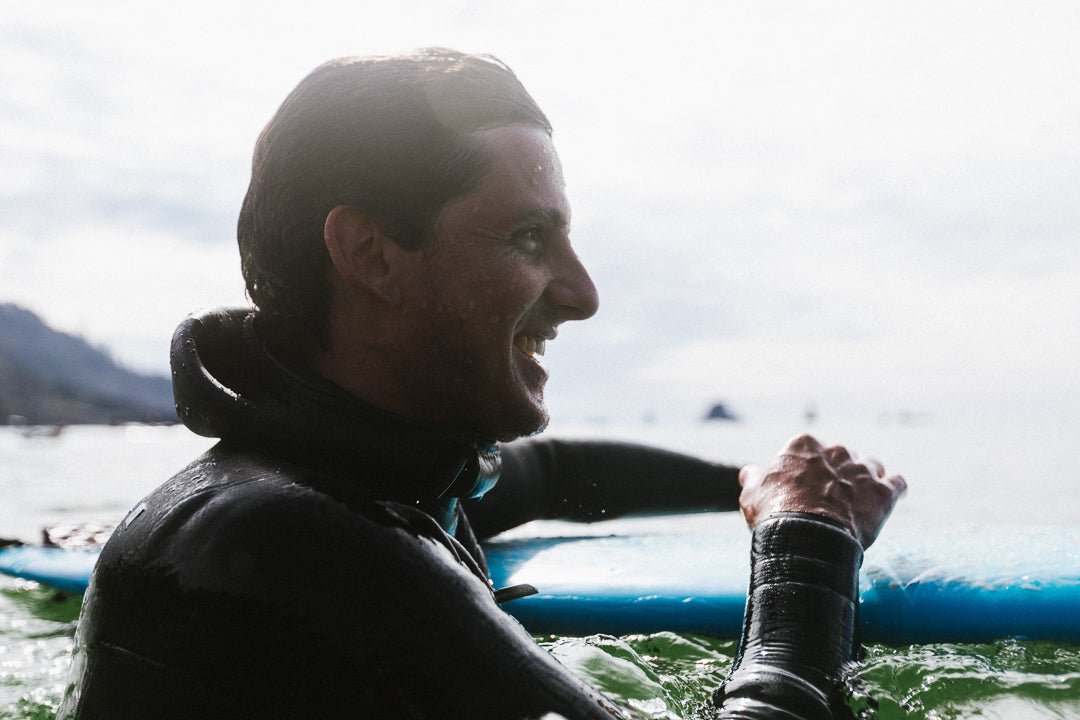Transitioning from Snowboarding to Surfing: A Lesson in Perseverance:

The first time I tried to paddle a surfboard into a wave I was 12 years old. I was in Kennebunkport, Maine, in the summer. It was a sunny day, and the waves were inconsequential—calling them ankle biters might have been an overstatement, but I didn’t know any better—as far as I could tell, conditions were perfect.
It only took a few tries before I was popping up on my 9-foot soft-top (with the help of my surf instructor pushing me into the waves, which I underestimated at the time). The experience came and went, I wasn’t hooked nor was I dissatisfied. My only reference point for surfing was a brief infatuation with Kelly Slater’s Pro Surfer on my Nintendo Gamecube, but that faded quickly.
After my first meeting with the pleasant rhythm of the ocean, I briefly toyed with the idea of buying a board—maybe more for the material. But alas, being a 12-year-old meant I didn’t have much in my savings account (read: piggy bank), and my parents were having none of it—I only spent around 10 days on the ocean a year, anyways.
It wasn’t until 6 years later when I moved to the West Coast where I began to get hooked. I was living in Vancouver, and while there’s no surf in Vancouver, with Vancouver Island and the Washington Coast within driving distance, the surf culture exists—even if it’s just on the very periphery of an outdoor culture consumed by the mountains.
 In my element snowboarding in the backcountry
In my element snowboarding in the backcountry
Growing up in Vermont, I was just that: consumed by the mountains. I had moved to Vancouver to ride the world-famous ski resort Whistler Blackcomb, and explore the world of backcountry snowboarding for the first time.
While winters were easily filled with snowboarding, there was a noticeable void in the shoulder season and summer months, and that urge for adventure was quickly satiated with surfing. Going into another sideways oriented sport, I had one big misconception—my experience snowboarding would make the transition easy. Boy, was I wrong.

One of my early surf adventures where I didn’t look at the forecast. I’ll let you in on a secret: I didn’t surf the entire weekend.
Completely disregarding the unique art of tasks such as understanding a forecast and tidal swings, reading a rip current, and understanding the minute changes in board shape & size, I figured my experience on a snowboard would immediately vault me into the lineup hierarchy.
Sure, standing up on a longboard (after plenty of struggle) felt perfectly natural. But everything else? Well, that was where I struggled. Among the pain points were the fact that I didn’t know what the difference was between low and high tide, I thought I could paddle for any wave and get into it without any trouble, and I thought I would be making turns after just a few sessions—wrong, wrong, and wrong.
The reality is, besides the balance and natural sideways standing motion once I got through all the other riffraff, I had a long way to go, and my false sense of confidence had wrecked my fundamentals. My journey was long, and often times misguided by ego. The lessons I learned? Stay humble, take a lesson. Ride a bigger board, and don’t be afraid to look like a fool. Read up on the inner workings of the ocean, follow the forecasts, and don’t be afraid to ask questions.
No matter your background, the ocean has a way of humbling and inspiring anyone who steps into its realm—be prepared for both, and you’ll get what you hoped for out of your experience. Just prepare for an intense mixture of frustration and elation along the way.
 As the saying goes "Only a surfer knows the feeling"
As the saying goes "Only a surfer knows the feeling"






